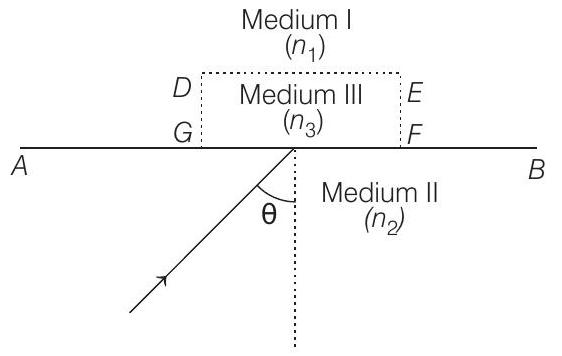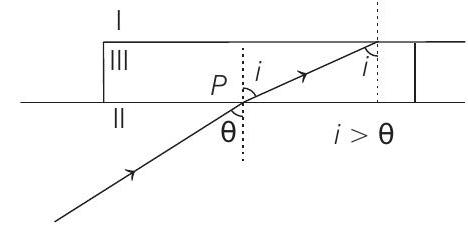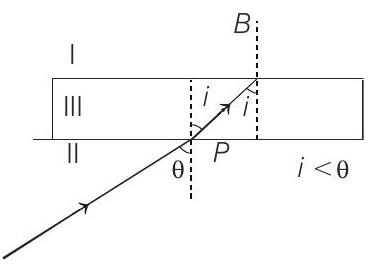Optics 7 Question 44
45. Monochromatic light is incident on a plane interface
The angle

Consider separately the cases :
(1986, 6M)
(a)
(b)
Show Answer
Answer:
Correct Answer: 45.
Solution:
- Given
(a) When
Hence, critical angle for III and II will be less than the critical angle for II and I. So, if TIR is taking place between I and II, then TIR will definitely take place between I and III.
(b) When
Case
In this case there will be no TIR between II and III but TIR will take place between III and I. This is because

Ray of light first enters from II to III
Applying Snell’s law at
Since,
but
Or TIR will now take place on I and III and the ray will be reflected back.
Case
This time while moving from II to III, ray of light will bend towards normal. Again applying Snell’s law at

Since,
but
i.e.
Therefore, TIR will again take place between I and III and the ray will be reflected back.
NOTE Case I and case 2 of






